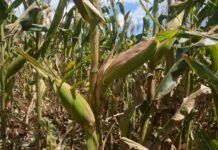By James Wong, Ethnobotanist and Presenter of Follow the Food on BBC World News and BBC.com
In the future, there will be more of us than ever, but we won’t be living in the countryside next to where our food is grown, we’ll be in the cities. It’s estimated that, by 2050, more than 60 percent of the world’s population will live in a city, and they’ll all need food. But breakages in food supply chains during the COVID-19 pandemic highlighted the distances our food often travels and the potential for agility in that system.
How realistic is it for us to shift thousands, if not millions, of tonnes of food into cities? Is it possible to move food production closer to the area of its consumption, perhaps even to the heart of the cities themselves?
I grew up in the high-rise of Singapore, and often went on school trips to rooftop gardens growing salad leaves. Even then, I thought it was crazy to think you could feed a metropolis on lettuce but, as we discover in the new series of Follow the Food on BBC World News, times are changing.
Overground
I visited the world’s largest urban rooftop farm, Nature Urbaine, located on the seventh floor of a building in Paris. At 150,000 square feet – the size of two football pitches – it dwarfs all of those rooftop gardens I saw as a kid. At Nature Urbaine, they concentrate on growing food such as tomatoes, strawberries, eggplant and butternut squash. When it’s in full production, the farmers will be harvesting up to 1,000 kilos of 35 different varieties of fruit and vegetable every day. But, with only so much rooftop available, if we’re going to be feeding millions, then urban farmers will need to look elsewhere too.
Underground
In the 1960s and 1970s, Paris built a large number of underground car parks and, with car ownership in the city falling, it means that many are now standing empty – almost 600 hectares of them.
It’s within one of these disused car parks beneath Paris’s streets that Jean-Noel Gertz co-founded La Caverne, a unique urban farm that grows mushrooms. Delivered to local shops and restaurants, the farm has the ability to grow up to 100 kilos of mushrooms per day, across 38,000 square feet. It might seem like a drop in the ocean in a city of 11 million people but, if you applied that level of output across all 600 hectares of empty space available, Paris’s underground car parks could produce nearly 170 tonnes a day.
With some varieties of mushroom containing almost a third of their dry weight as protein, they could be a fantastic addition to supplement the usual leafy greens normally associated with urban farms.
Whilst going underground opens up a whole new dimension to urban farming, maybe we need to go a step further and create purpose-built underground farms. With 10 billion people expected to be on the planet by 2050, can urban farming make a meaningful contribution to feeding the masses, and what role could the sea play?
In the sea
Ten of the world’s largest mega cities are situated on the coast, but only 2% of our global calories are currently sourced from the seas. The majority of this comes from fish but our fish stocks are heavily depleted. One possible solution is to turn to other types of seafood, such as mussels, but for sustainably-farmed shellfish to become a realistic food source grown right next to coastal cities, it would require a big change.
As a source of protein, they tick every box, but mussels are so mineral rich because they’re filter feeders – they suck in and concentrate everything that’s in the sea water around them, including heavy metals and other pollutants. So, realistically speaking, could our waters ever be clean enough to support this? New Yorkers think so…
Home to 18.8 million people, it was once known as the oyster capital of the world, but a population boom and pollution all but wiped out these filter feeders in little under a hundred years. Today, New York harbour is cleaning up its waters and a project to see nearly one billion oysters back on its harbour floor by 2035 is proving that farming the waters around our megacities, with a little work, may be possible in the future.
Vertical farming
With space on land at a premium, could vertical farming be the key to urban farming? The concept has been around for decades, but only really become commercialised in recent years, and limited to just growing salad leaves, which isn’t going to sustain a city.
80 Acres Farms in Hamilton, Ohio, is a big player in the rapidly growing business of vertical farming, and they’re looking to shake up the industry. Specialising in converting urban spaces into urban farms, the company was founded in 2015 by Mike Zelkind and Tisha Livingston, who wanted to give consumers the right product, at the right time, at the right price – something that wasn’t feasible 10 years ago without the latest technology to enable indoor vertical farming.
The vertical farming industry has come a long way over a short space of time – it’s expected to be valued at over USD $12 billion by 2026. Contributing to that figure, 80 Acres Farms is currently working on creating one of the largest, fully automated farms in the United States.
At 55 feet high, the farm has 10 rows, 10 levels and is 10 positions deep, and in just 70,000 square feet, this vertical farm will robotically plant, harvest and package over USD $2 million of nutritious, sustainable and affordable produce annually.
Fresh ideas
It’s easy to dismiss urban farming as a gimmick, a science fiction of the future, but what I’ve found out through my journey for Follow the Food is the extent to which some of these ideas are really practical. To develop practical solutions, you do have to entertain ideas which, on the surface of it, sound weird and wonderful, but I think it really is a case of watch this space…








